Switzerland: Gandria On Lake Lugano
May 28, 2021 15:12:05 #
After a scenic 30 minute cruise on the SNL boat we arrived in Gandria in time for a great Italian lunch and a walk around this most picturesque little town.
Gandria is both a quarter of the city of Lugano in the Swiss canton of Ticino, and a village on the northern shore of Lake Lugano, which forms the core of that quarter. Until 2004, the quarter of Gandria was an independent municipality, joining with Lugano in that year. The quarter of Gandria includes the rural slopes surrounding the village and stretching along the lakeside from the neighboring quarter of Castagnola-Cassarate to the border with Italy. It also includes the slopes on the opposite, (southern) side of the lake around the small settlement of Cantine di Gandria, that are accessible only by boat or on foot. The historically protected center of the village of Gandria, which is also not accessible by car, attracts visitors from all over the world. While roads now reach the outskirts of the village, many of these visitors arrive by boat services on the lake. It is also possible to walk from Lugano to Gandria and back to Lugano via a footpath, now branded the Olive path, which passes plantations of olive trees and offers views of the Lake of Lugano.
The first lasting human traces on the immediate area around Gandria come from the iron-age people of the Celts (as of 800 B.C.). A large stone (Sasso della Predescia) carved with mysterious signs, probably used for Celtic religious purposes, is located within hiking distance. Many modern locations nearby have Celtic names. Gandria sits at the base of Mt. Brè, which means “mountain” in Celtic. The name of the Lake of Lugano in Italian, Ceresio, could be derived from the Celtic word keresios, a reference to a god of fertility who is always pictured with the antlers of a deer – the lake’s resemblance to the prongs of an antler can be more easily imagined when viewed from above. Rome conquered the region in 196 B.C. Tombs and artifacts from the neighbouring villages of Castagnola and Brè are testimonials to the Roman presence. Present-day Gandria, however, was not yet inhabited.
“Gandrio” is first mentioned in archives from the bishop of Como in 1237. At the time, the village was located halfway up Mt. Bré – the ruins are still visible today along the trail to the Sasso della Predescia. In the 14th century, a new settlement was established along the lake in the present-day site. Eventually the upper part of the village was abandoned, perhaps due to fire, perhaps due to the advantages of living near the lake. Gandria was only accessible by boat and steep trails, locals had to be self-sufficient. In addition to gardening and raising livestock, they benefited from the lake’s abundant fish.
Until the unusually hard winter of 1709 killed most of the olive trees, Gandria was known for its olive oil. In recent years, olive trees have been replanted and information panels posted along a scenic lakeside trail to Lugano (Sentiero dell’olivo).
In 1856 silk production began in Gandria, using leaves from local mulberry trees to feed the silkworms. Because of the difficult-to-control border, the area around Gandria became infamous for smuggling. Cigarettes, meat and alcohol were especially profitable due to high Swiss customs duties. (A notable item at the Swiss Customs Museum is a confiscated “submarine” used to smuggle salami). The year 1935 was the beginning of a new era for Gandria, as tunnels and a new road above the lake shore connected the village to Lugano and Italy.
Gandria village and its surrounding areas are connected to Lugano, and to Italy, by the main road that runs along the northern shore of Lake Lugano. This passes above the village centre, which, by virtue of its extremely narrow streets and steep gradients, is inaccessible to vehicles. In addition to the higher level road, it is also possible to walk from Gandria to Lugano and other surrounding villages via the publicly maintained lakeside Olive Path hewn into the rock in 1936.
A boat service between Gandria and other towns on the lake is provided by the Società Navigazione del Lago di Lugano (SNL) and is regular. The same company also operates a bus service between Gandria and Lugano. The portion of Gandria on the south side of the lake, around Cantine di Gandria and the Swiss Customs Museum, has no roads. The shore-side footpath, which links the area to Caprino, is subject to rockfalls and not recommended for the inexperienced walker. The SNL provide several crossings a day from Gandria village (and central Lugano) to piers at both the Cantine di Gandria and the Customs Museum.
https://en.wikipedia.org/wiki/Gandria
From the Ticino Top Ten website: https://www.ticinotopten.ch/en/villages/gandria
"Gandria's centre is charming and well preserved, where the building facades are reflected in the waters of Lake Ceresio. It is one of Ticino's most beautiful lakeside villages. The buildings, tightly aligned, can be reached via stairways and alleyways. Some of the houses date back to the 16th and 17th centuries and are embellished with frescoes and stucco decorations. The village is comfortably accessible by boat from Lugano and is connected to two very enjoyable walks: the Sentiero di Gandria (Gandria trail) and the route that develops from the village's opposite bank, much appreciated in the summer for its grottos (taverns).
Gandria is the last Swiss village before the Italian border. The mountaintops in front of it are already Italian territory, but the conglomeration of houses visible at their feet are still on Swiss soil: these are the Cantine di Gandria, the cellars where in the past local residents would store their wine, cured meats and cheeses. Just as other villages on the banks of Lake Ceresio, Gandria was home to many artists and architects that became renowned abroad, like the brothers Giovanni and Giuseppe Torricelli, who were engaged in the 12th century construction of the Trento Cathedral. The two brothers also decorated the ceilings of the beautiful house of Vigilio and Pietro Rabaglio and are known to have designed the royal palace of the Bourbons in Segovia, Spain.
I hope you enjoy this set. Please try the downloads. For more images of the boat ride see my previous post:https://www.uglyhedgehog.com/t-698371-3.html#12274856
Mark
Gandria is both a quarter of the city of Lugano in the Swiss canton of Ticino, and a village on the northern shore of Lake Lugano, which forms the core of that quarter. Until 2004, the quarter of Gandria was an independent municipality, joining with Lugano in that year. The quarter of Gandria includes the rural slopes surrounding the village and stretching along the lakeside from the neighboring quarter of Castagnola-Cassarate to the border with Italy. It also includes the slopes on the opposite, (southern) side of the lake around the small settlement of Cantine di Gandria, that are accessible only by boat or on foot. The historically protected center of the village of Gandria, which is also not accessible by car, attracts visitors from all over the world. While roads now reach the outskirts of the village, many of these visitors arrive by boat services on the lake. It is also possible to walk from Lugano to Gandria and back to Lugano via a footpath, now branded the Olive path, which passes plantations of olive trees and offers views of the Lake of Lugano.
The first lasting human traces on the immediate area around Gandria come from the iron-age people of the Celts (as of 800 B.C.). A large stone (Sasso della Predescia) carved with mysterious signs, probably used for Celtic religious purposes, is located within hiking distance. Many modern locations nearby have Celtic names. Gandria sits at the base of Mt. Brè, which means “mountain” in Celtic. The name of the Lake of Lugano in Italian, Ceresio, could be derived from the Celtic word keresios, a reference to a god of fertility who is always pictured with the antlers of a deer – the lake’s resemblance to the prongs of an antler can be more easily imagined when viewed from above. Rome conquered the region in 196 B.C. Tombs and artifacts from the neighbouring villages of Castagnola and Brè are testimonials to the Roman presence. Present-day Gandria, however, was not yet inhabited.
“Gandrio” is first mentioned in archives from the bishop of Como in 1237. At the time, the village was located halfway up Mt. Bré – the ruins are still visible today along the trail to the Sasso della Predescia. In the 14th century, a new settlement was established along the lake in the present-day site. Eventually the upper part of the village was abandoned, perhaps due to fire, perhaps due to the advantages of living near the lake. Gandria was only accessible by boat and steep trails, locals had to be self-sufficient. In addition to gardening and raising livestock, they benefited from the lake’s abundant fish.
Until the unusually hard winter of 1709 killed most of the olive trees, Gandria was known for its olive oil. In recent years, olive trees have been replanted and information panels posted along a scenic lakeside trail to Lugano (Sentiero dell’olivo).
In 1856 silk production began in Gandria, using leaves from local mulberry trees to feed the silkworms. Because of the difficult-to-control border, the area around Gandria became infamous for smuggling. Cigarettes, meat and alcohol were especially profitable due to high Swiss customs duties. (A notable item at the Swiss Customs Museum is a confiscated “submarine” used to smuggle salami). The year 1935 was the beginning of a new era for Gandria, as tunnels and a new road above the lake shore connected the village to Lugano and Italy.
Gandria village and its surrounding areas are connected to Lugano, and to Italy, by the main road that runs along the northern shore of Lake Lugano. This passes above the village centre, which, by virtue of its extremely narrow streets and steep gradients, is inaccessible to vehicles. In addition to the higher level road, it is also possible to walk from Gandria to Lugano and other surrounding villages via the publicly maintained lakeside Olive Path hewn into the rock in 1936.
A boat service between Gandria and other towns on the lake is provided by the Società Navigazione del Lago di Lugano (SNL) and is regular. The same company also operates a bus service between Gandria and Lugano. The portion of Gandria on the south side of the lake, around Cantine di Gandria and the Swiss Customs Museum, has no roads. The shore-side footpath, which links the area to Caprino, is subject to rockfalls and not recommended for the inexperienced walker. The SNL provide several crossings a day from Gandria village (and central Lugano) to piers at both the Cantine di Gandria and the Customs Museum.
https://en.wikipedia.org/wiki/Gandria
From the Ticino Top Ten website: https://www.ticinotopten.ch/en/villages/gandria
"Gandria's centre is charming and well preserved, where the building facades are reflected in the waters of Lake Ceresio. It is one of Ticino's most beautiful lakeside villages. The buildings, tightly aligned, can be reached via stairways and alleyways. Some of the houses date back to the 16th and 17th centuries and are embellished with frescoes and stucco decorations. The village is comfortably accessible by boat from Lugano and is connected to two very enjoyable walks: the Sentiero di Gandria (Gandria trail) and the route that develops from the village's opposite bank, much appreciated in the summer for its grottos (taverns).
Gandria is the last Swiss village before the Italian border. The mountaintops in front of it are already Italian territory, but the conglomeration of houses visible at their feet are still on Swiss soil: these are the Cantine di Gandria, the cellars where in the past local residents would store their wine, cured meats and cheeses. Just as other villages on the banks of Lake Ceresio, Gandria was home to many artists and architects that became renowned abroad, like the brothers Giovanni and Giuseppe Torricelli, who were engaged in the 12th century construction of the Trento Cathedral. The two brothers also decorated the ceilings of the beautiful house of Vigilio and Pietro Rabaglio and are known to have designed the royal palace of the Bourbons in Segovia, Spain.
I hope you enjoy this set. Please try the downloads. For more images of the boat ride see my previous post:https://www.uglyhedgehog.com/t-698371-3.html#12274856
Mark
Approaching Gandria Village on the SNL boat
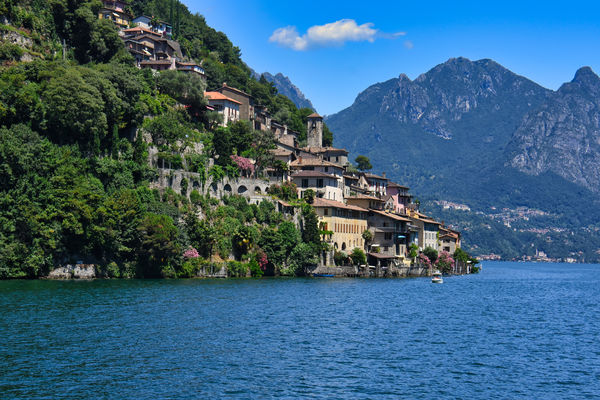
(Download)
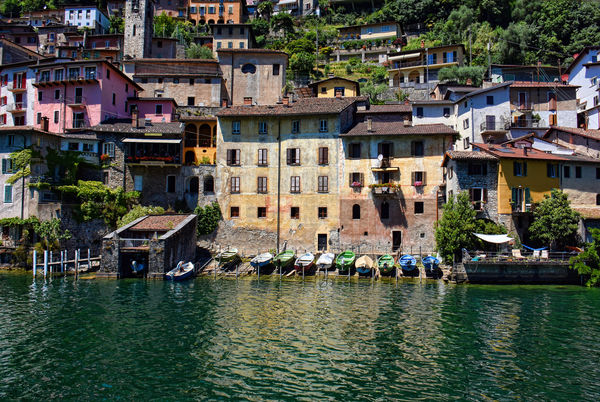
(Download)
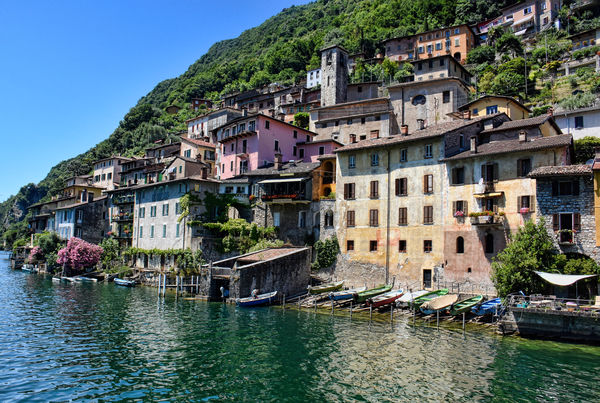
(Download)
The waterfront looking west, with Monte San Salvatore in the distance
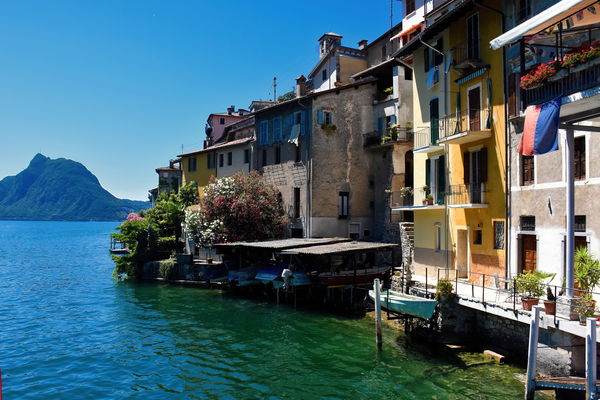
(Download)
The waterfront looking east toward Italy
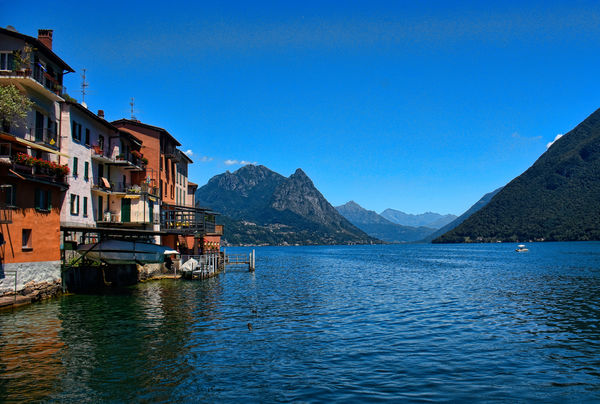
(Download)
From the deck dining room at Ristorante Antico
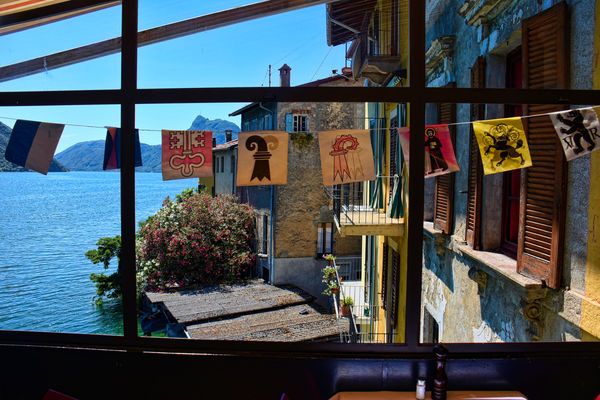
(Download)
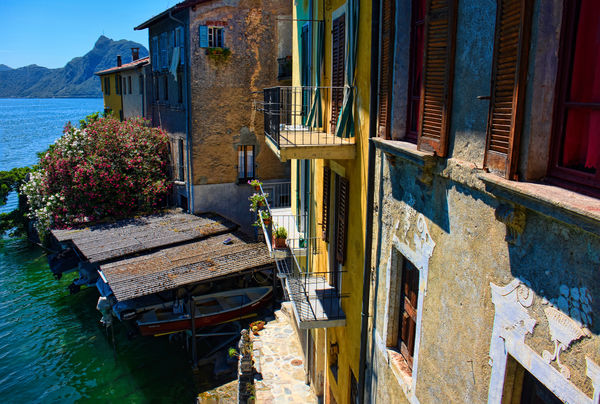
(Download)
The boatman expertly lassos the mooring hook in one throw
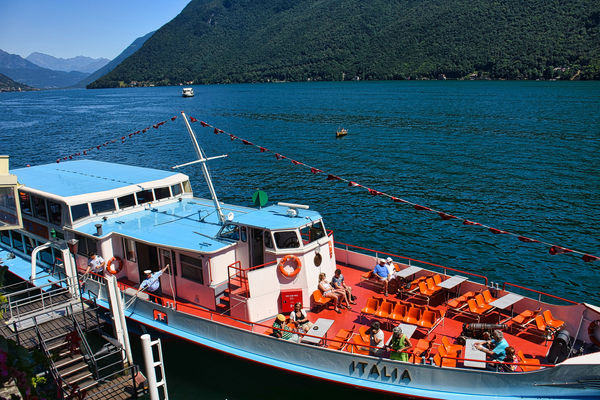
(Download)
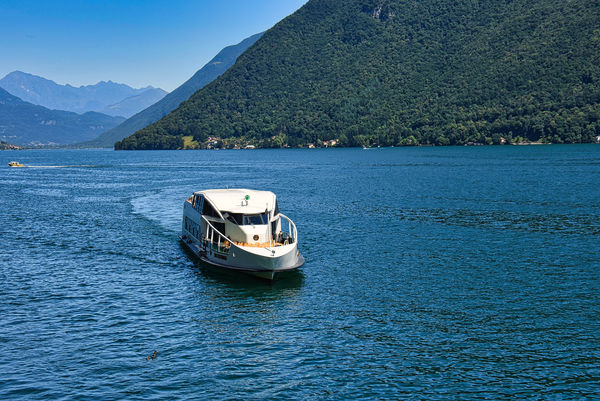
(Download)
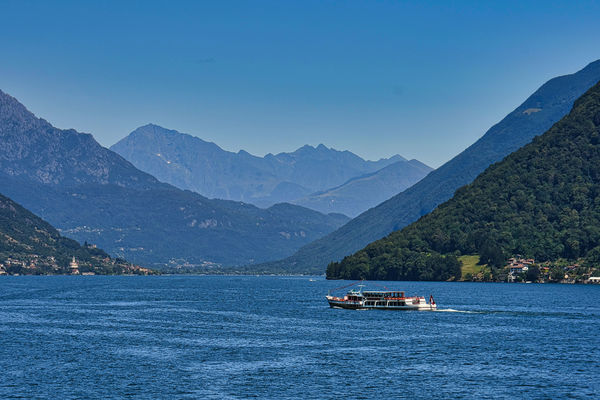
(Download)
May 28, 2021 15:18:43 #
srfmhg wrote:
After a scenic 30 minute cruise on the SNL boat we... (show quote)
Mark, Great images to supplement your excellent post. You can become a travel agent in your second life.Stan
May 28, 2021 15:46:52 #
May 28, 2021 15:56:29 #
srfmhg wrote:
After a scenic 30 minute cruise on the SNL boat we... (show quote)
Very interesting narrative and beautiful photos Mark. It looks like a wonderful boat ride too.


May 28, 2021 16:36:38 #
May 28, 2021 17:02:47 #
May 28, 2021 17:26:28 #
May 28, 2021 17:30:37 #
srfmhg wrote:
After a scenic 30 minute cruise on the SNL boat we... (show quote)
Speçtacular and breathtakingly beautiful 💯💯💯💯🌹
May 28, 2021 18:03:39 #
PixelStan77 wrote:
Mark, Great images to supplement your excellent post. You can become a travel agent in your second life.Stan
Thanks so much Stan. I appreciate that!
May 28, 2021 18:04:35 #
Toment wrote:
Great set, interesting.
Thanks for sharing
Thanks for sharing
You're most welcome Toment. Thank you for looking in.
May 28, 2021 18:05:35 #
DJphoto wrote:
Very interesting narrative and beautiful photos Mark. It looks like a wonderful boat ride too.




Thanks so much Dennis. It's not to be missed if you're in Lugano.
May 28, 2021 18:07:24 #
NMGal wrote:
Beautiful lake. The town has too many stairs for me.
Thanks very much Barbara. The stairs are wide as you'll see in my next post so you can take a step or 2 before going up.
May 28, 2021 18:08:02 #
Cwilson341 wrote:
A beautiful part of the world, Mark!
It certainly is Carol. Thanks for commenting.
May 28, 2021 18:08:24 #
May 28, 2021 18:09:00 #
joecichjr wrote:
Speçtacular and breathtakingly beautiful 💯💯💯💯🌹
Thanks very much Joe. I appreciate!
If you want to reply, then register here. Registration is free and your account is created instantly, so you can post right away.







